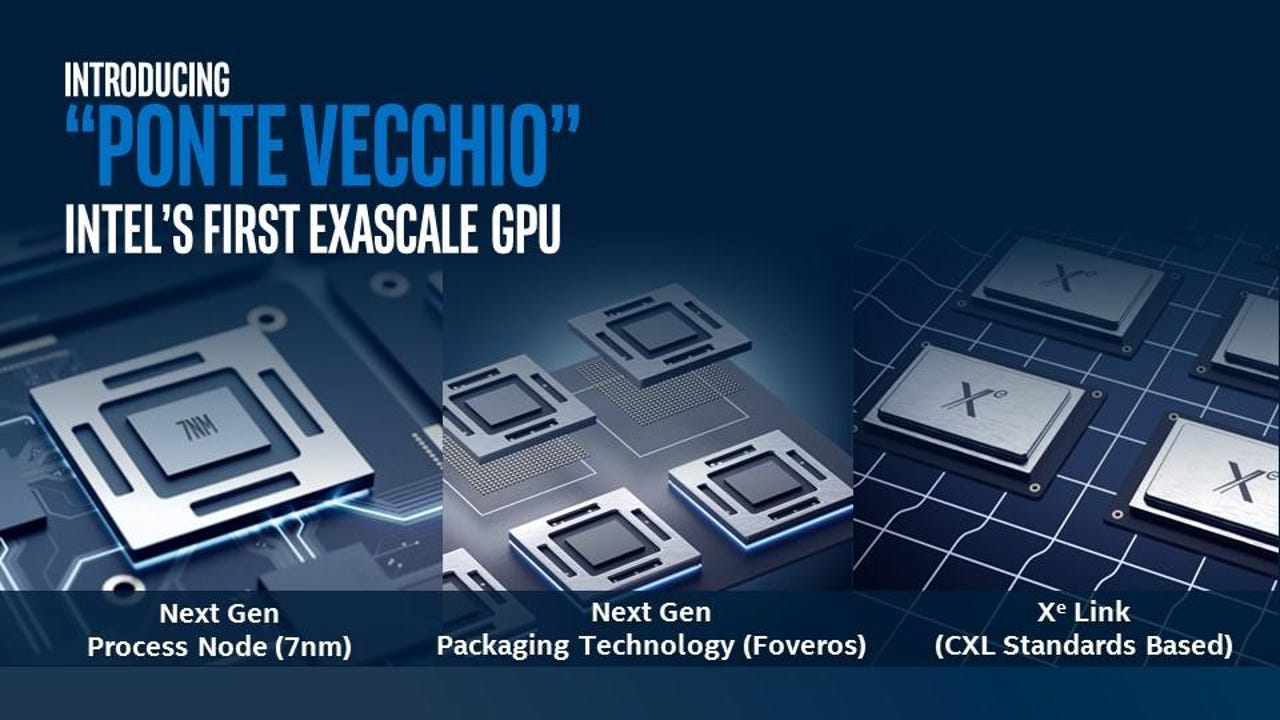Intel Xe GPUs are here with Ponte Vecchio launched at SC19


Intel has used Supercomputing 2019 (SC19) to announce a new category of GPUs based on the Xe architecture.
The company is promoting the Xe GPUs as purpose-built for data centre artificial intelligence and high performance computing (HPC) workloads, rather than gaming.
The chip giant has named the compute-focused graphics processing unit after a bridge in Florence -- the Ponte Vecchio.
See also: How the GPU became the heart of AI and machine learning
The Ponte Vecchio is already set to power the first exascale system in the United States, Aurora, which is housed at the Argonne National Labs in DuPage County, Illinois.
The node architecture of Aurora system comprises of two Xeon Processors, called Sapphire Rapids, and six full-connected HPC/AI-optimised GPUs based on the Intel Xe architecture.
It's due for delivery in 2021.
Also announced by Intel at SC19 was the oneAPI Initiative.
According to Intel, oneAPI will "provide a unified and simplified programming model to deliver cross-architecture performance by allowing a diverse data-centric workload to benefit from the breadth of Scalar (CPU), Vector (GPU), Matrix (AI), and Spatial (FPGA) architectures".
The oneAPI initiative is based on open specifications and standards, as Intel's way of encouraging cross-vendor adoption. It said there would otherwise be no common programming language or APIs and inconsistent tool support across platforms.
Intel released its own implementation of oneAPI with a set of oneAPI Toolkits now available in beta, and an oneAPI developer cloud, which the company touted as providing developers access to a large portfolio of developer tools and a variety of Intel architecture-based systems.
The oneAPI devcloud is a development sandbox to develop, test, and run workloads across a range of Intel CPUs, GPUs, and FPGAs.
RELATED COVERAGE
Intel unveils next-gen Movidius VPU, codenamed Keem Bay
The chipmaker also demonstrated the new Nervana Neural Network Processor for Training (NNP-T) and the Nervana NNP for inference, expanding its portfolio of AI-focused hardware.
Intel unveils Element device for modular PC builds
The new hardware - which comprises a processor, Thunderbolt and USB ports, and built-in network connectivity in a dual-slot PCIe card - is a more powerful version of the NUC Compute Element the chipmaker introduced earlier this year as a replacement for the Compute Card.
Intel to launch 2nd gen Optane DC persistent memory 'Barlow Pass' next year
Intel will launch its second generation Optane Data Centre Persistent Memory and SSD, as well as a 144-layer 3D NAND next year.